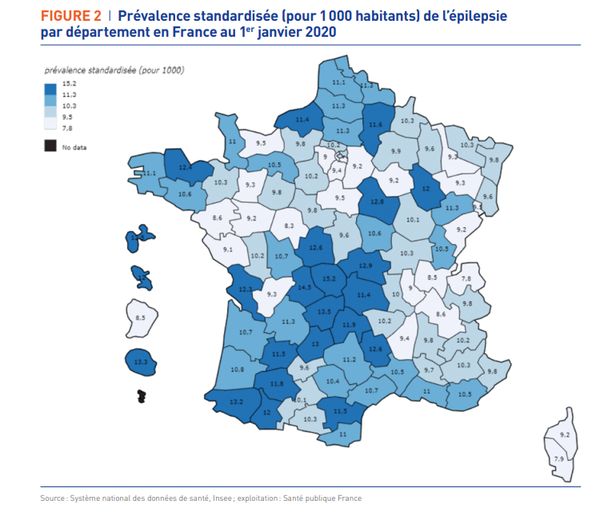Epilepsy, a revealer of social inequalities: Occitanie among the “most disadvantaged” territories
An unprecedented study carried out by Public Health France makes epilepsy a marker of health inequalities in France. Occitanie appears to be one of the regions where the prevalence of the disease is the highest, directly linked to the economic situation of the region: 16.8% of the population lives below the threshold of poverty.
"Epilepsy appears to be a good marker of health inequalities in France" : this is the conclusion of an unprecedented study by Public Health France, which makes a link between the prevalence of the disease, a chronic neurological disorder which affects 700,000 people in France, and the socio-economic situation in France, on a departmental scale.
With a prevalence of 10.2 per 1000 inhabitants, France is overall in a situation identical to that of countries like the United States or England, indicates Public Health France.
But this "normality" hides a strong heterogeneity at the territorial level, and Public Health France draws a map of France of the disease where "the prevalence increases regularly with the social level", revealing "notable heterogeneity".
Fourth poorest region in France
In Occitanie, the fourth poorest region in France according to INSEE, displays a particularly high disease prevalence map: only the departments of Tarn-et-Garonne (prevalence of 9.6 per 1000 ) and Haute-Garonne (10.1) are below the national figure.

The prevalence map in France. PUBLIC HEALTH FRANCE
Lozère (12.6), Hautes-Pyrénées (12) and Aude (11.5) display the highest rates.
L’Hérault (10.7), l’Aveyron (11.2), Gard (10.5) are also above the national average, and still in the slice of departments "the most disadvantaged", in fifth place on a scale which goes from 1 to 5.
"We also observe a dose-effect relationship between the level of socio-economic deprivation of the place of residence and the prevalence of treated epilepsy, with an increase of 42% in the most deprived quintile (10.1 cases per 1000 inhabitants) compared to the least deprived quintile (7.1 cases per 1000 inhabitants)", indicates the study.
What explains this situation ? Public Health France puts forward two main explanations : "On the one hand, stigma, side effects of treatment, comorbidities, in particular psychiatric disorders, can lead to a reduction in the performance of epileptic subjects, and therefore to greater difficulty in finding and keeping a job, and secondarily to a drop in income" ;, says the study.
"On the other hand, the increase in the incidence of first seizures observed in socially disadvantaged subjects suggests that genetic factors and developmental (such as exposure to toxic substances intra utero and during early childhood) or environmental (pollution) could be involved" in the disease.




